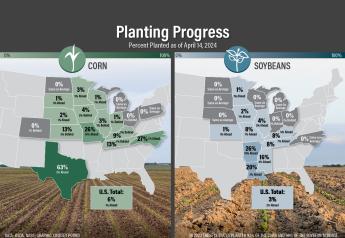Lessons from 2020: The Black Swan Still Lives
USFR 01/02/21 - RT1
2020 was a dynamic year for the markets. From optimism last January to the pandemic causing prices to plummet in the spring, the markets managed to make a recovery during the fall. So, what did the markets teach us in 2020?
“The Black Swan lives,” says Arlan Suderman of StoneX Group. “And you always have to factor that into your marketing plan, the Black Swan or the unexpected events certainly can happen. In 2020, we saw it attack and the foundation of two of the three pillars of corn demand, that being livestock demand as well as ethanol production. It attacked both of those and that’s why we lost so much consumption.”
Suderman says the market also followed a cycle in 2020 where low prices finally cured low prices.
“We saw two years when hedge funds were net short in the ag grain and oilseed markets, and now they've turned long, so we've basically been in a pattern of deflation for a long time. Now we're moving into a period of inflation with high money supply, record setting money supply, a cheap dollar, and the tide has turned.”
Dan Basse of AgResource Company says 2020 proved markets are changeable. After several years of stagnant prices, the markets flipped with producers seeing what Basse calls a dramatic rally in a short period of time.
“We fell sharply on the loss of about 600 or 700 million bushels of ethanol demand for corn. That took us into the end of April and May. And then we had a sharp rally as we got the Chinese demand and a flash drought in the Midwest,” says Basse. “Now, here we are today looking at maybe one of the more bullish outlooks that I've seen in my 40-year career, at least for the soybean market.”
Basse says 2020 was a year unlike any other, but if he had to compare it to another year in history, he says the market performed similar to 1988 and 1989. That’s when the U.S. saw dramatic supply loss.
“This year, it was kind of the trifecta where we had a flash drought in the Midwest, and we had a major drought in the Black Sea. Now we're looking at weather problems in South America. Combining that with the return of the Chinese hog herd really gives us a different environment.”
Basse says the markets have been searching for a demand driver for nearly eight years, and 2020 produced an answer in the form of China.
“We've now found a short term and Chinese corn demand,” says Basse. “Let's see if it continues. But my runway now is probably 18 to 24 months of more bullishness than I've seen going back to 2013.”
“We've had a lot of supply driven rallies over the years and they're quick and they don't last long. Demand driven rallies have more foundation under them, they start slower, they build momentum, they last longer,” says Suderman. “Now we have a combination of demand and supply threads working together. But the demand underneath of it is sound as long as we keep this economy going forward, and hopefully the vaccines will help us do that.”
Related Stories:
Why $15 Soybeans May Be a Reality in the New Year
2021 Weather Outlook: Is 2021 Shaping Up to Match Drought of 2012?







